The Benefits of Messy and Sensory Play: Why Children Need to Make a Mess
26 July 2023
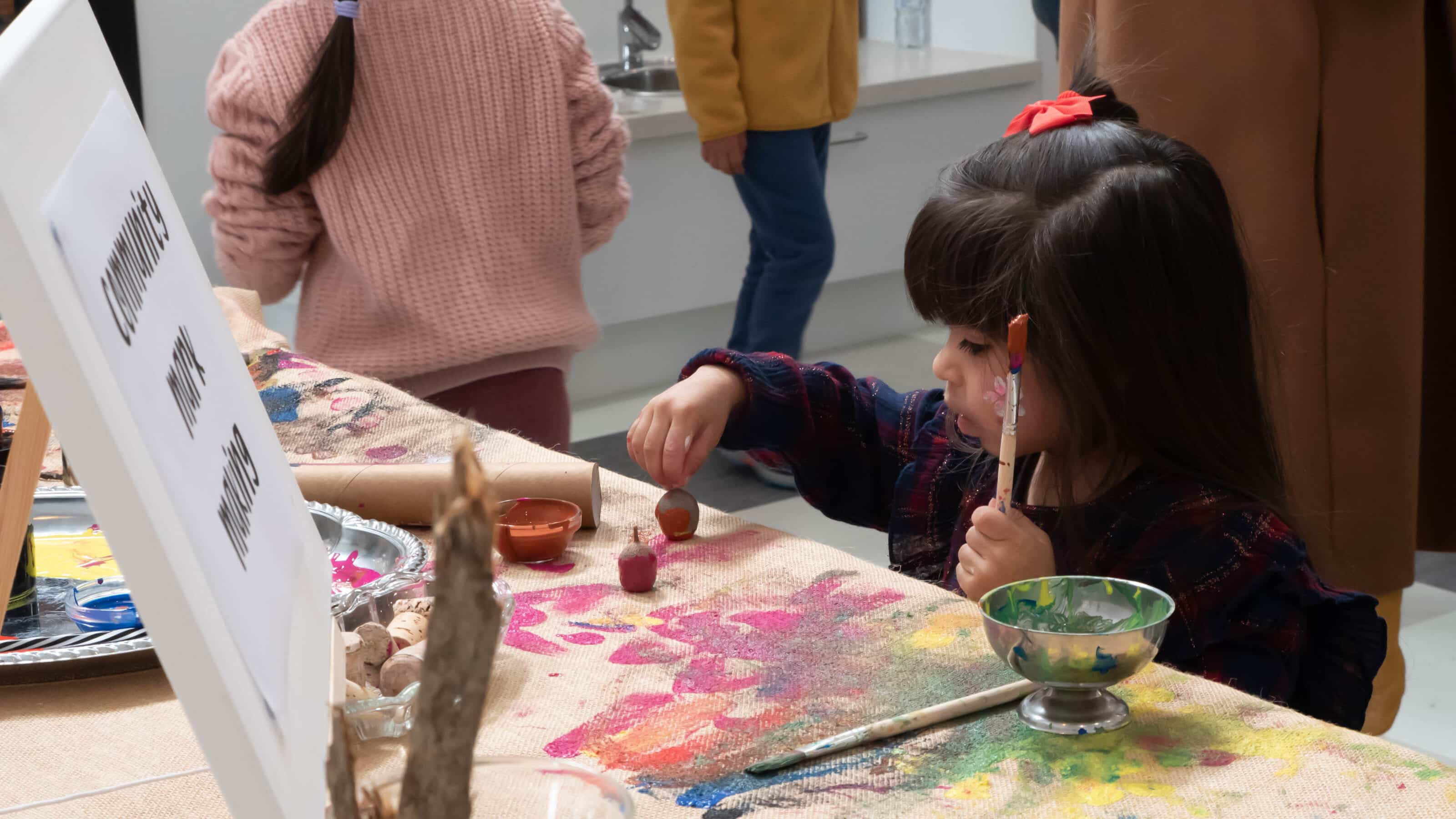
What is messy and sensory play, and is it worth the clean-up? Read on for our full breakdown of messy play, along with some suggestions to get your child’s brain buzzing 👇
Messy and sensory play is incredibly beneficial for children as young as six months old. From finger painting to exploring sensory materials, messy play offers a world of opportunities for learning and physical development, even if the clean-up can be a hassle!
In this post, we break down the physical and cognitive benefits of messy play and explore why your child should embrace the mess.
Sensory Development
Messy play engages (almost) all the senses. When children squish their fingers into mud or clay, they feel the sensation, hear the sounds, and smell the material. Therefore, sensory activities provide valuable cognitive input, helping children refine their tactile perception and develop a greater understanding of different textures.
And there’s so many sustainable options to choose from:
- Water
- Sand
- Dirt
- Mud
- Homemade playdough
- Clay
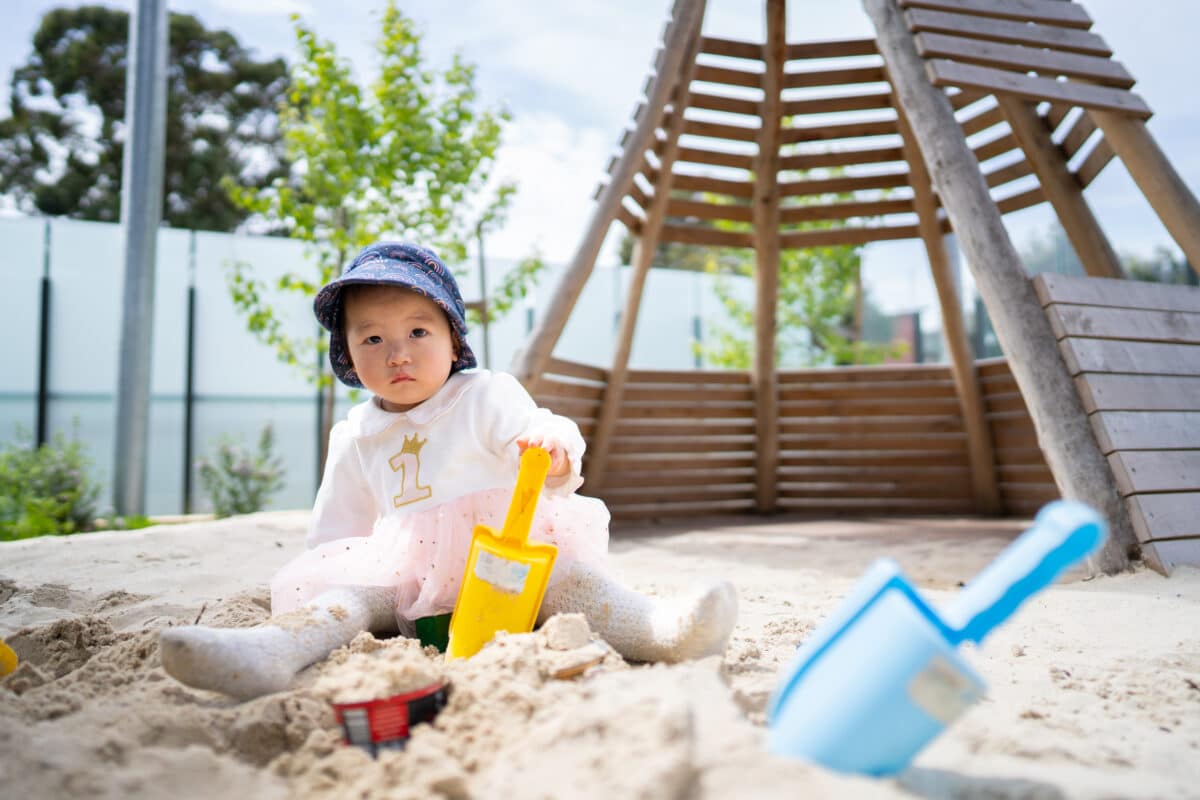
Messy Play Activities
6-12 months
Although they’re mostly babbling at the 6-12 month mark, babies love messy play and sensory exploration! Just be sure to supervise and only use gentle materials:
- Cotton
- Fabric
- Crinkly paper
- Fleece
- Satin
- Water
12-24 months
By age two, children are as curious as ever. Their brains develop rapidly as they near the end of the first 1000 days of life. Therefore, they want to touch, smell, and experience the world around them. This is perfect for messy play:
- Sensory bins
- Sand/clay
- Homemade playdough exploration
- Finger painting
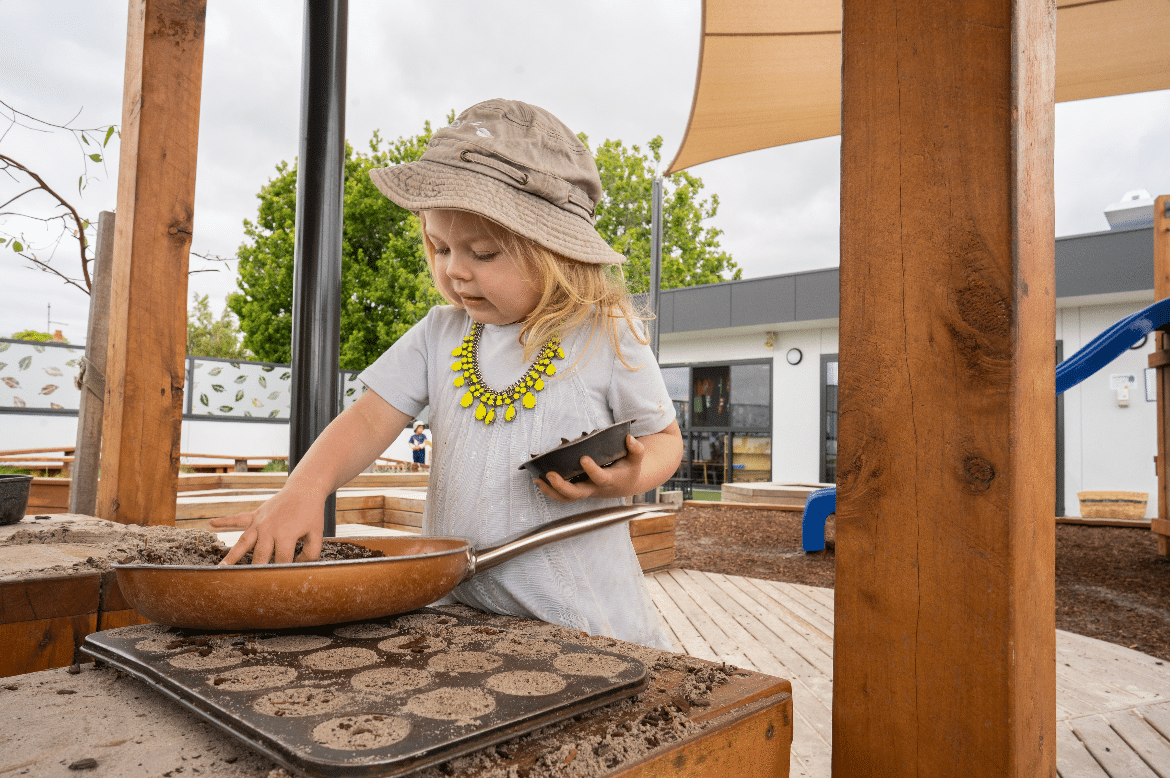
2-3 Years
Children between ages 2 and 3 are typically walking, talking, and full of attitude! This is where you can really start to inspire their artistic side by adding more elements to their messy play experience.
- Water-based paints
- Sensory ice play
- Clay time
3-5 Years
By the time your child is in Kinder, you’ll probably be looking for ways to give them the best start for primary school. Therefore, this is the perfect time broaden their messy play experience to prep them for their next big steps:
- Nature exploration
- Sensory storytelling
- Painting and drawing
Cognitive Skills
Messy play goes beyond engaging the senses. Rather, it aims to nurture children’s emerging cognitive skills.
When children engage in messy play, they’re presented with open-ended materials and situations which encourage problem-solving, critical thinking, and decision-making. For instance, when building sandcastles or clay sculptures, children think creatively and strategically to achieve their desired outcomes.
In addition, messy play provides opportunities for experimentation and exploration. Children mix colours, observe cause-and-effect relationships, and question what happens next when different materials are combined. This hands-on approach fosters curiosity and a love for discovery, promoting a growth mindset in children.
Fine Motor Skills
Messy play activities often involve actions such as squeezing, pouring, and scooping. These activities promote the development of fine motor skills and hand-eye coordination in children. Whether they’re using a paintbrush, pouring water, or moulding clay, children flex their dexterity and refine their ability to control and coordinate their movements.
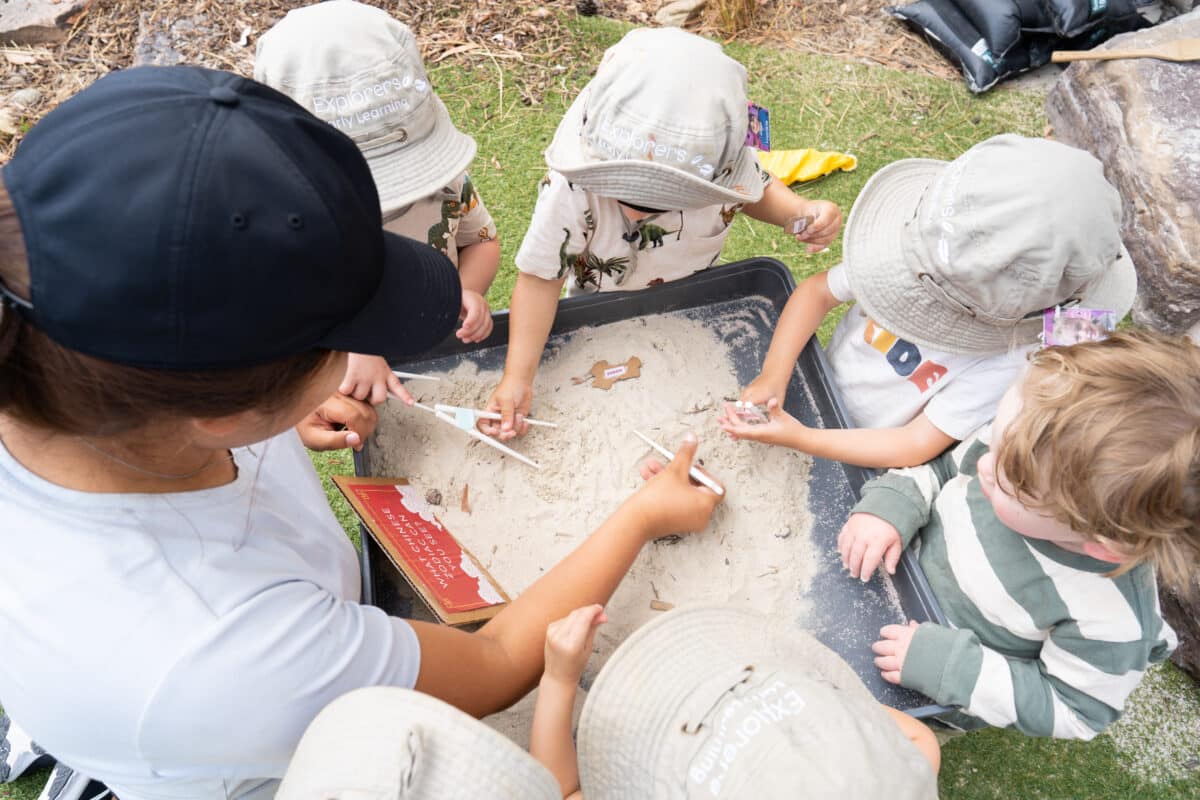
Language Development
Messy play also plays a vital role in language development. During messy play, children inevitably engage in conversation and storytelling. They describe the sensory experience, use descriptive language to express how the colours make them feel, and share their observations. This rich linguistic environment expands vocabulary, improves communication skills, and nurtures creative expression.
Emotional and Social Development
Embracing messy play allows children to express themselves freely and build independence. When children are given the freedom to explore materials and engage in unstructured play, they develop a sense of ownership and pride in their creations.
Messy play also offers opportunities for collaboration and sharing as children work together on projects and exchange ideas.
Moreover, messy play provides a safe space for children to experience a range of emotions. Whether it’s the joy of squishing paint or the frustration of a sandcastle collapsing, children navigate and express their feelings through these immersive experiences. As they explore and experiment, they develop emotional resilience and adapt to different situations.
Creativity and Imagination
Messy play and creativity go hand-in-hand. When given open-ended materials and the freedom to explore, children create, transform, and invent things most adults couldn’t dream of.
Whether they’re sculpting clay, mixing colours, or creating sand masterpieces, messy play encourages divergent thinking and fosters innovation.
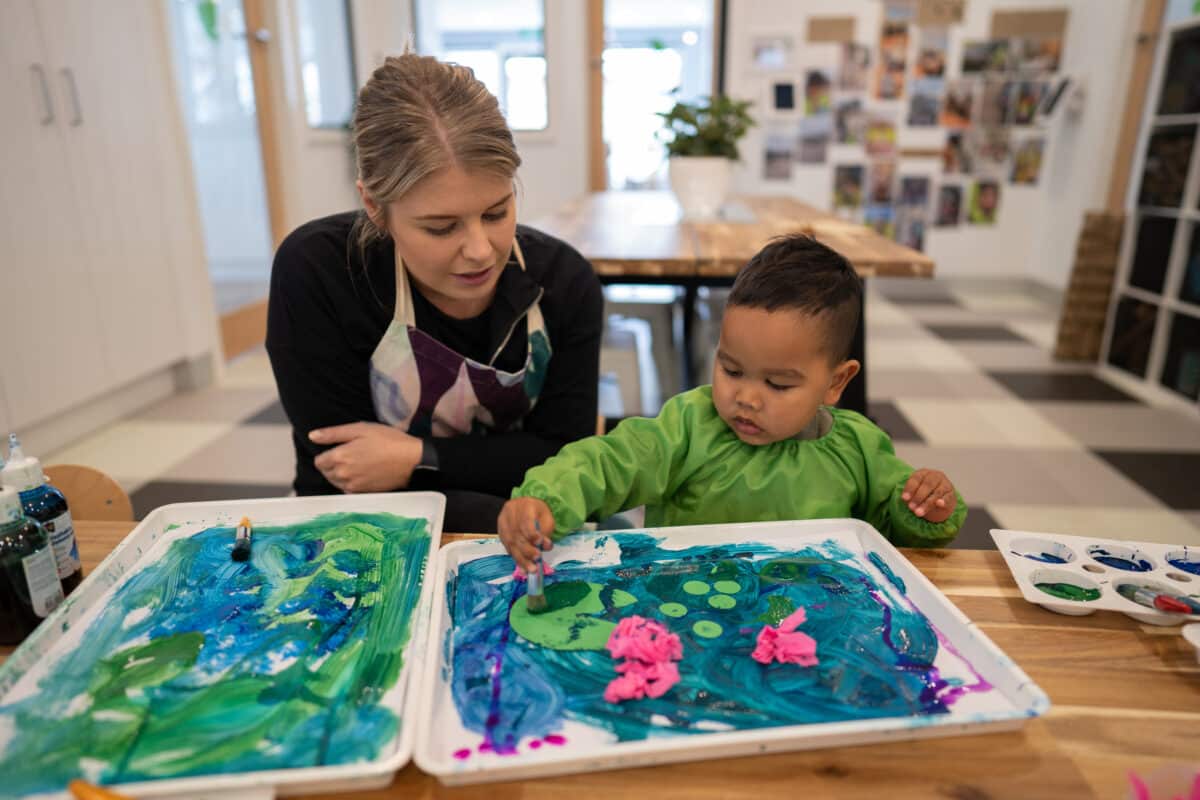
Why is Messy Play Important?
The focus of messy play is on process rather than the end result. Children learn that there’s no one rule to express yourself, allowing them to embrace their creativity without fear of judgment. This freedom nurtures self-discovery and fuels a lifelong love for art and curiosity.
Ultimately, messy play provides children with invaluable opportunities for growth, development, and self-expression. By embracing the mess, they unlock a world of creativity and sensory exploration. Additionally, the benefits of messy play extend beyond the temporary chaos and strengthen cognitive, emotional, and social skills in children well into primary school.
Just remember to provide a safe and supervised environment for messy play, use child-friendly (and sustainable) materials, and try to involve your child in the clean-up process. After all, the mess is temporary, but the skills they gain last a lifetime.
🍃 To tour one of our beautiful Centres, please click here. Otherwise, check out our website to register your interest at Explorers Early Learning today!